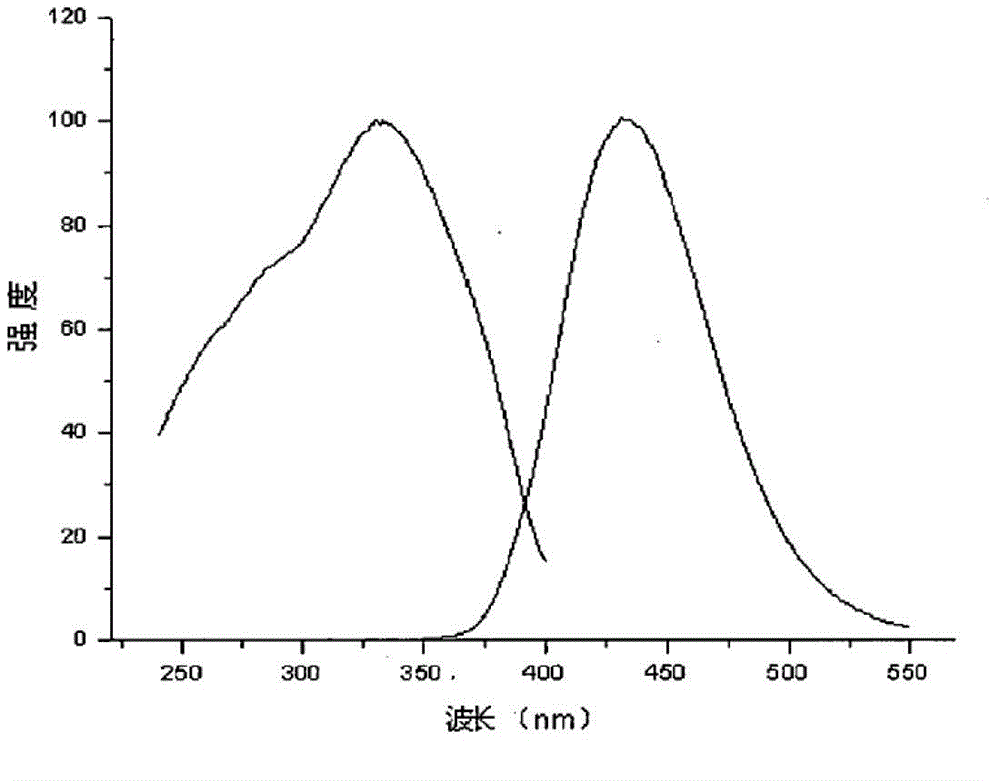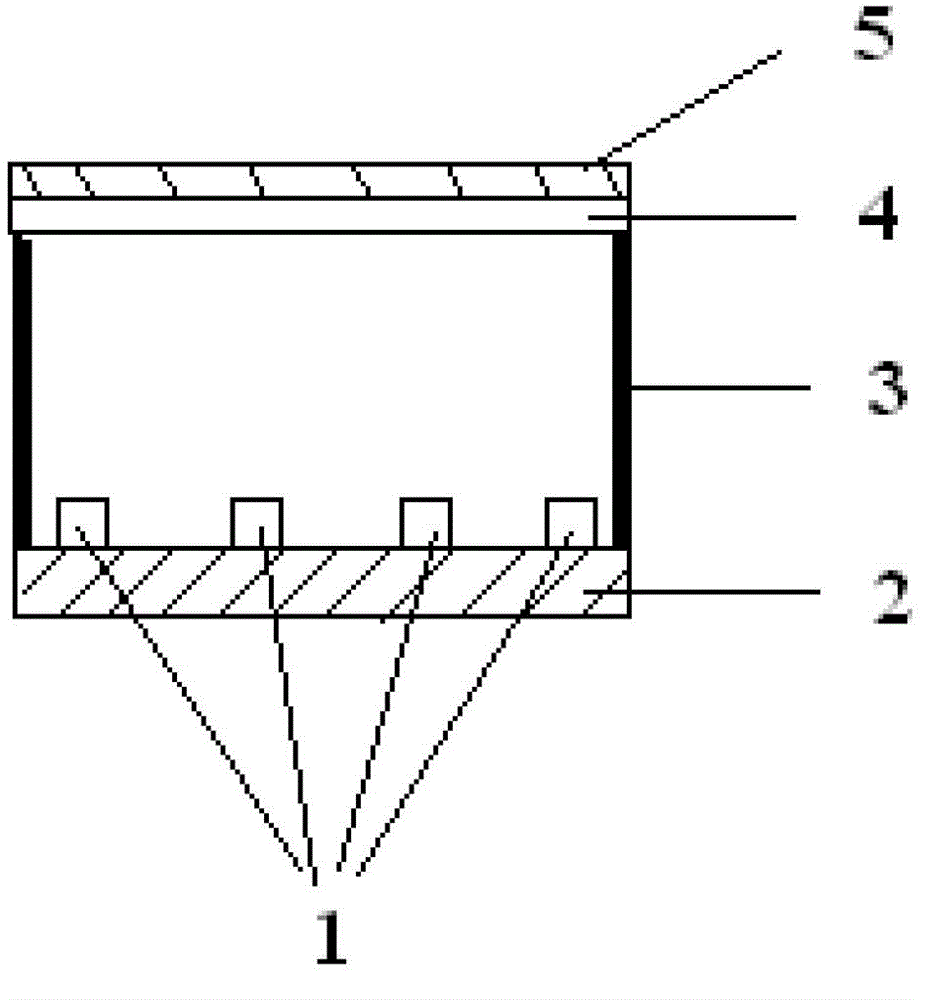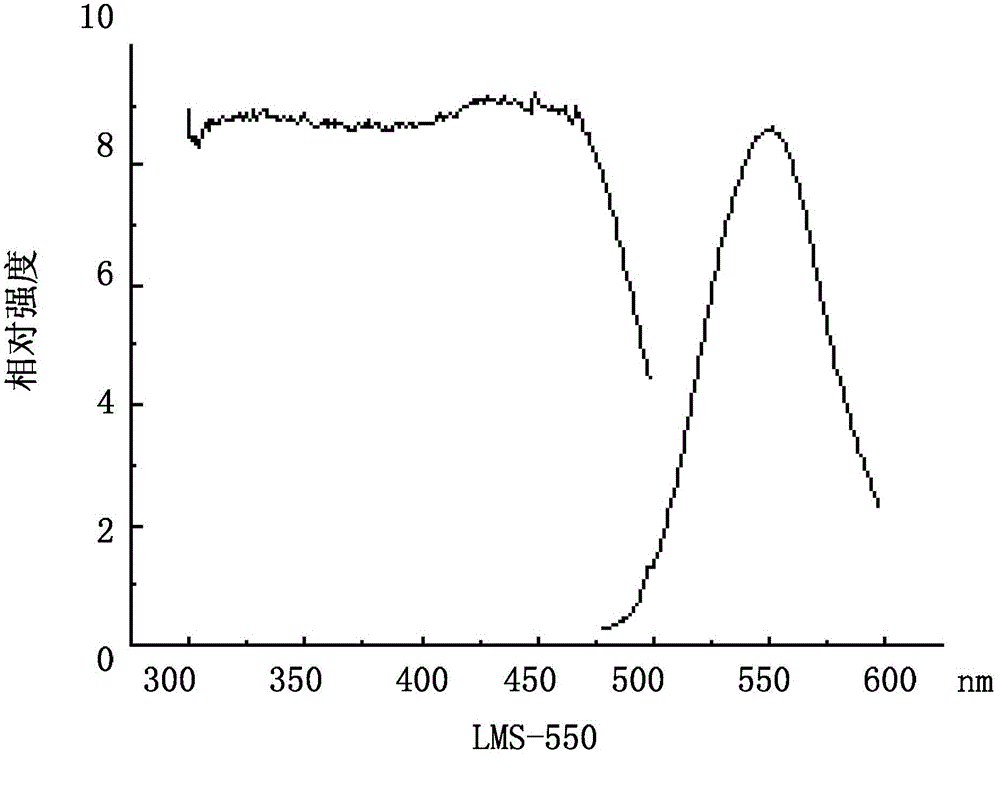White light emitting device based on purple LED
A light-emitting device, purple light technology, applied in the field of lighting, can solve the problem of low photoexcitation conversion efficiency of three primary color phosphors
- Summary
- Abstract
- Description
- Claims
- Application Information
AI Technical Summary
Problems solved by technology
Method used
Image
Examples
preparation example Construction
[0020] The preparation method of Eu-doped high-silica blue light-emitting glass is as follows:
[0021] First, the raw material containing Eu ions is made into an aqueous solution containing Eu ions, nitric acid solution, sulfuric acid solution, ethanol solution or acetone solution, and then the SiO 2 The high-silica porous glass with a content of more than 95wt% is immersed in the solution, wherein the concentration of Eu ions is 0.005-0.1M. According to the different requirements for the absorption of ultraviolet light and the luminous intensity of blue light, the high-silica porous glass can be soaked In different concentrations of Eu ion solutions, high-silica luminescent glasses with different Eu ion contents are made to control the absorption of ultraviolet light and the luminous intensity of blue light. After soaking, the high-silica porous glass is taken out and dried, and then placed in high temperature Furnace, at 95%N 2 +5%H 2 Under a reducing atmosphere, after si...
Embodiment 1
[0023] Example 1, such as figure 2 As shown, a white light emitting device based on purple LEDs includes a housing 3, a support plate 2 is provided inside the housing 3, and at least one purple LED semiconductor light source 1 with an emission wavelength in the range of 210nm to 410nm is provided on the support plate 2, In this embodiment, four purple LED semiconductor light sources 1 are arranged, and a high-silica light-emitting glass plate 4 doped with Eu ions opposite to the purple LED semiconductor light source 1 is also arranged in the housing 1. The purple LED semiconductor light source 1 and the Eu ion-doped A gap is left between the high-silica luminescent glass plates 4, and one side of the high-silica luminescent glass plate facing away from the purple LED semiconductor light source is provided with a mixture of yellow phosphor and red phosphor, a mixture of green phosphor and red phosphor, and a yellow phosphor. A phosphor layer 5 formed by one of the phosphors. ...
Embodiment 2
[0024] Example 2, a white light emitting device based on purple LEDs, the yellow phosphor in the phosphor layer 5 is a silicate phosphor with broadband excitation. In this example, Dalian Luming Lighting Technology Co., Ltd. LMS is selected. A series of rare earth-activated silicate phosphors (product number LMS-550), the structure of the device in this embodiment, the selection of violet LEDs and the coating method of the phosphors are the same as those in Embodiment 1, and will not be repeated here.
[0025] The excitation and emission spectra of the yellow phosphor LMS-550 are shown in image 3 , It can be seen from its excitation spectrum that LMS-550 phosphor can efficiently absorb blue-violet light from 300nm to 460nm and emit yellow light around 550nm. In this device, most of the 365nm purple light emitted by the purple LED is absorbed by the Eu-doped high-silica luminescent glass plate 4, and emits 442nm blue light, and the blue light emitted by the Eu-doped high-silic...
PUM
| Property | Measurement | Unit |
|---|---|---|
| thickness | aaaaa | aaaaa |
Abstract
Description
Claims
Application Information
 Login to View More
Login to View More - R&D
- Intellectual Property
- Life Sciences
- Materials
- Tech Scout
- Unparalleled Data Quality
- Higher Quality Content
- 60% Fewer Hallucinations
Browse by: Latest US Patents, China's latest patents, Technical Efficacy Thesaurus, Application Domain, Technology Topic, Popular Technical Reports.
© 2025 PatSnap. All rights reserved.Legal|Privacy policy|Modern Slavery Act Transparency Statement|Sitemap|About US| Contact US: help@patsnap.com



